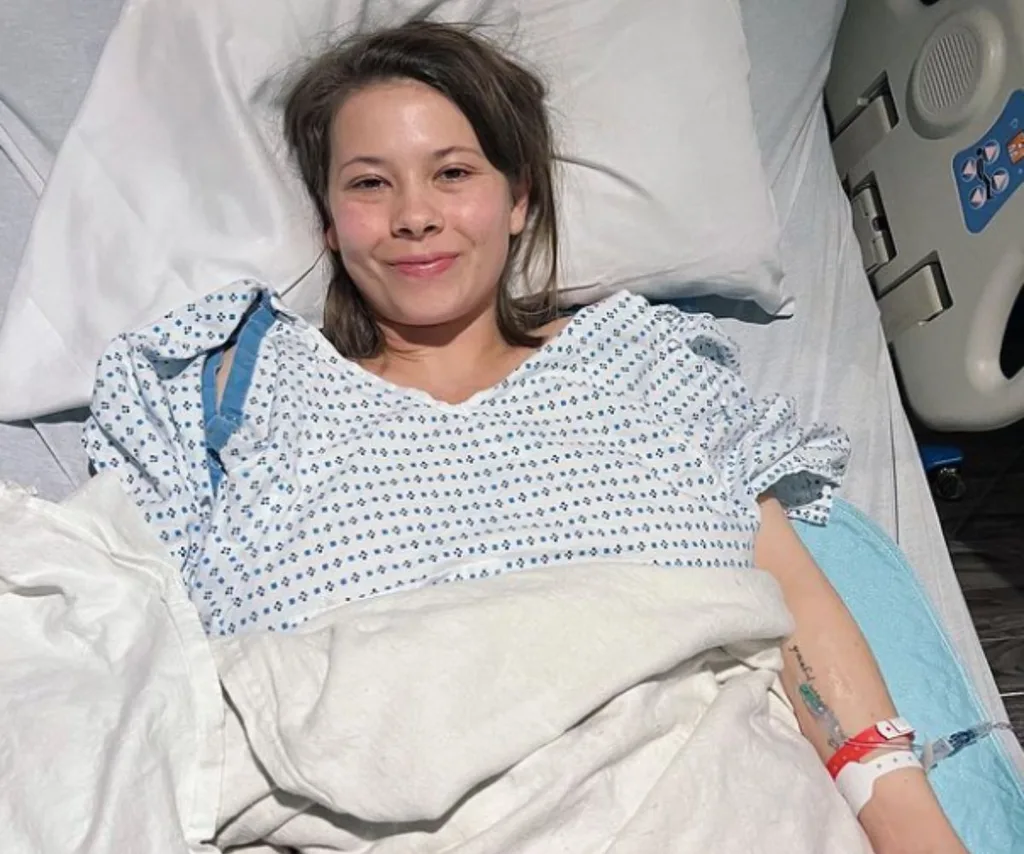When Bindi Irwin opened up about her painful 10-year battle with endometriosis last month, she shared an experience that’s familiar for many. Revealing that she was recovering after surgery, the 24-year-old urged women in the same position to “keep searching for answers”.
Dr Karen Kong, a fertility specialist at IVF Australia, says there are a lot of myths and misconceptions that prevent women from getting diagnosed – including the belief that extreme period pain is normal.
“The major misconception is that it’s just a normal period,” says Dr Kong.

Bindi Irwin recently opened up about her battle with endometriosis.
(Image: Instagram)This means that women can struggle for years with symptoms, which can also include heavy periods and infertility.
“One in 10 women have this condition and it can take 10 years to diagnose,” says Dr Kong.
“There are a lot of people suffering with the consequences of not having it diagnosed or treated.”
The lowdown on endo
Endometriosis occurs when the endometrial tissue, which normally lines the uterus, grows in another place where it isn’t supposed to be. In most cases this will occur around the reproductive organs, but in rare cases it may develop in other parts of the body, such as the bladder or even the lungs. While endometriosis usually ceases after menopause, a small number of women will continue to experience symptoms.
“I still see women with pelvic pain after menopause,” says Dr Kong.
Endometriosis and pain
Not everyone with endometriosis experiences pain, but for many women, this can be debilitating. In some cases it may last for a few days, while others may struggle for the entire month.
“There are people who have pain with intercourse or pain with opening their bowels or passing urine,” Dr Kong adds.
The fatigue of experiencing symptoms with each cycle can have a devastating impact on mental health.
“It’s that anticipation that every month is going to be the same,” she explains.
WATCH: Emma Watkins opens up about her struggle with endometriosis. Article continues after video.
Fertility struggles
Around 30 to 50 per cent of women with endometriosis find it hard to get pregnant. In some cases they will only discover they have endometriosis when they try to start a family.
“Some people have no pain at all and just fertility issues,” Dr Kong explains.
“They’ll say, ‘There’s no pain, I don’t have endometriosis.’ And so I say, ‘Look, that’s not necessarily the case because fertility itself is a symptom of endometriosis.'”
Heavy periods
“Heavy menstrual bleeding is another common symptom of endometriosis,” says Dr Kong.
In some cases, endometriosis can coexist with another condition called adenomyosis. This occurs when the endometrial tissue grows into the muscles of the uterus and can result in heavier than normal periods. This can be an extremely distressing condition for many women and can lead to other symptoms such as fatigue and iron-deficiency anaemia.
WATCH: Sophie Monk’s endometriosis hospital visit. Article continues after video.
Why is it hard to diagnose?
Endometriosis can be difficult to diagnose, and it’s not uncommon for it to be misdiagnosed as another condition such as IBS. In other cases, such as Bindi’s, it may be dismissed by doctors as normal period pain.
“They’ll say, ‘Take some pain relief, take the pill,'” Dr Kong explains.
This isn’t always the fault of any one doctor. It can also result from wider issues within the medical community that include a lack of research into endometriosis and limited awareness and training.
“Not every doctor is well trained at picking up this condition,” Dr Kong explains.
Getting diagnosed
Dr Kong says a good first step is to find a gynaecologist who has expertise in endometriosis or related symptoms like infertility or pelvic pain.
It’s also important to know that endometriosis doesn’t always show up on ultrasound. In some cases it may be necessary to undergo a laparoscopy – a minimally invasive keyhole procedure that can detect endometriosis and operate on it.
“Laparoscopy is the gold standard for treating endometriosis,” says Dr Kong.
A laparoscopy is performed under general anaesthetic, through two to four tiny incisions on the abdomen. A second operation may be needed, while other women may skip surgery and opt for other treatments.
